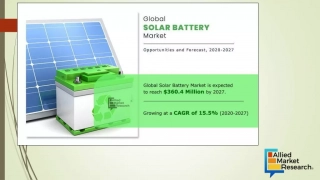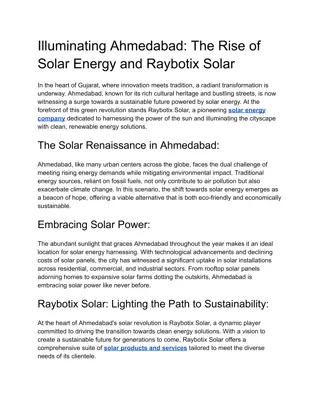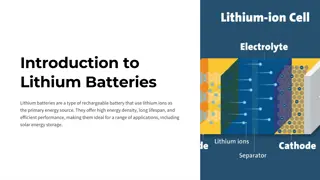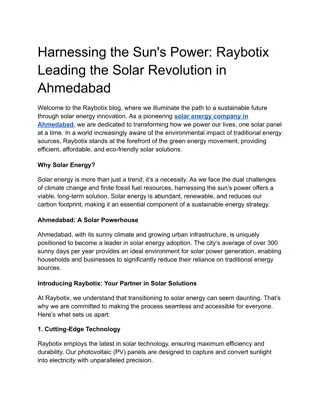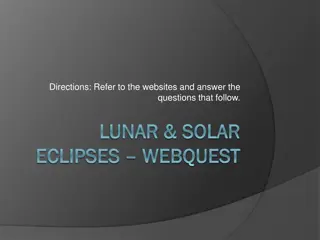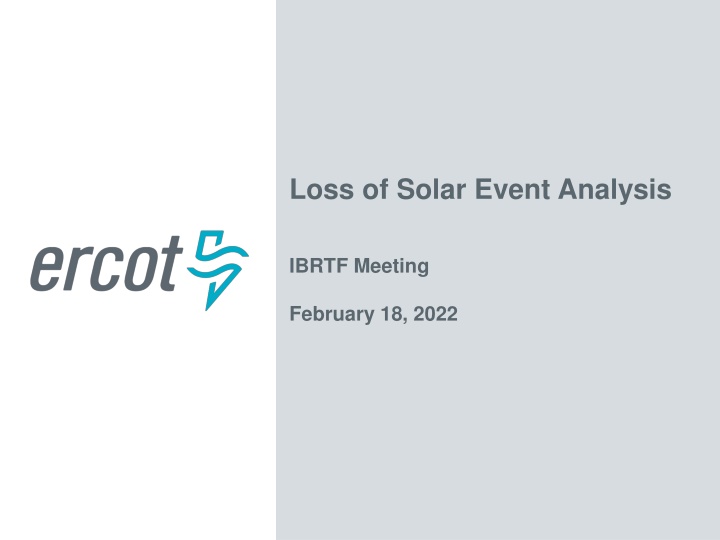
Solar Event Analysis and Detection for Improved Grid Resilience
Explore the detailed analysis presented during the IBRTF meeting on February 18, 2022, focusing on solar event detection procedures, background information, recent event data, and plans for automation and process enhancements to enhance real-time monitoring of PMU networks.
Download Presentation

Please find below an Image/Link to download the presentation.
The content on the website is provided AS IS for your information and personal use only. It may not be sold, licensed, or shared on other websites without obtaining consent from the author. If you encounter any issues during the download, it is possible that the publisher has removed the file from their server.
You are allowed to download the files provided on this website for personal or commercial use, subject to the condition that they are used lawfully. All files are the property of their respective owners.
The content on the website is provided AS IS for your information and personal use only. It may not be sold, licensed, or shared on other websites without obtaining consent from the author.
E N D
Presentation Transcript
Loss of Solar Event Analysis IBRTF Meeting February 18, 2022
Agenda Background Event Detection Procedure Events since June 2021 Next Steps Automation and Email Notification Improvements to Real-Time PMU Network 2 PUBLIC
Background Detect and mitigate smaller events to prevent larger events Cannot be dependent on models alone Using actual events to improve model accuracy Better data for analysis 3 PUBLIC
Event Detection Procedure (Currently) Scan Solar.MW PI tags for reduction ~100 MW or greater Match up with frequency deviations so not chasing telemetry dropouts Developed tool to locate MW losses greater than 10 MW for every solar unit during user defined time frame Replay in Real Time Dynamic Monitoring System (RTDMS) to look for possible faults Track events and reach out to REs for any events of interest 4 PUBLIC
Solar Loss Events ~100 MW or Greater June December 2021* Solar Events 9 1200 8 1000 7 6 800 MW 5 600 4 3 400 2 200 1 0 0 June July August September October November December # Events Total MW Loss *Excluding June 26 Event 5 PUBLIC
Solar Loss Events ~100 MW or Greater June December 2021 Total of 30 events ranging from 78 MW to 252 MW 9 events associated with a fault 2 events with MW losses at multiple plants, both associated with faults 210 MW loss on 8/15 at 3 separate sites 185 MW loss on 12/10 at 2 separate sites Total of 18 plants and 27 units involved in at least one event 7 plants identified in NERC Odessa report involved in another event 6 PUBLIC
Next Steps Automation and Process Improvements Currently a manual process and events are often not found for days or weeks ERCOT working on improving tools to scan continuously and send email or trigger alerts when events detected Need to streamline communication process and develop event criteria for sending RFIs Need better access to high resolution data 7 PUBLIC
Improvements to Real-Time PMU Network PMUs streaming real-time data from POIs of solar farms are valuable to analysis No need to wait for plants to provide data, which may be erased after 10 days Can quickly replay events for analysis 3 TOs currently sending real-time PMU data which operate 43 of the 57 POIs for solar sites Currently receiving real-time PMU data from 13 POIs 8 PUBLIC
Questions? PUBLIC

